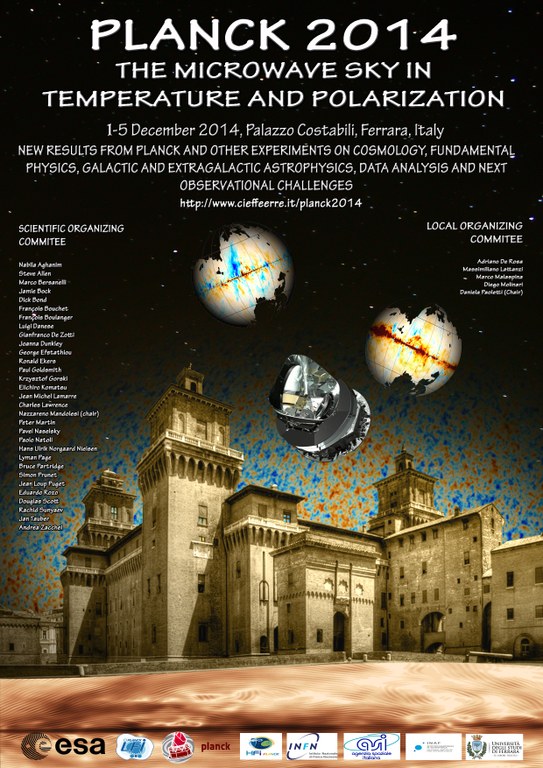This press release was issued on the 1 December by CNRS.PLANCK 2014 - The microwave sky in temperature and polarization The conference will be dedicated to the scientific results of the second cosmological data release from Planck satellite, the ESA mission to map the microwave sky and the anisotropies of the Cosmic Microwave Background radiation (http://www.esa.int/Planck ). The 2014 Planck public release of data products and papers will actually take place a few weeks after this conference. This conference is therefore the first occasion to preview the Planck 2014 data products and discuss their scientific impact.
A PDF of the press release can be downloaded at the above URL and material based on it may be read at Science DailyParis, 1 December 2014. CNRS.
Planck : new revelations on dark matter and relic neutrinos
The Planck collaboration, which notably includes the CNRS, CEA, CNES and several French universities, has disclosed, at a conference in Ferrara, Italy, the results of four years of observations from the ESA's Planck satellite. The satellite aims to study relic radiation (the most ancient light in the Universe). This light has been measured precisely across the entire sky for the first time, in both intensity and polarisation1, thereby producing the oldest image of the Universe. This primordial light lets us "see" some of the most elusive particles in the Universe: dark matter and relic neutrinos.
The New York Times has this article about the conference and the presented results.
Regarding the hoped-for polarisation studies, the NYT wrote:New Images Refine View of Infant Universe
By DENNIS OVERBYE
DECEMBER 1, 2014
In a throwback to another era in cosmic history, astronomers on Monday discussed the birth of the universe at a meeting in a 15th-century palace, the Palazzo Costabili in Ferrara, Italy, where the amenities do not include Internet access.
The subject of Planck 2014, as the meeting is called, is a new baby picture — and all of the accompanying vital statistics — of the universe when it was 380,000 years old and space was as hot as the surface of the sun. The portrait taker was the European Space Agency’s Planck satellite, which spent three years surveying a haze of microwave radiation left over from the last moments of the Big Bang with a bevy of sensitive radio receivers.
The data will not be published until Dec. 22 in the journal Astronomy & Astrophysics, and the lack of Internet access frustrated astronomers who had planned on watching a webcast of the proceedings but found themselves relying on Twitter feeds instead.
At least, they reported, the coffee was suitably strong.
...
Another useful résumé can be found here:The difficulty of doing this research, while the world looks on, can be gauged by the number of missed deadlines. Planck researchers originally hoped to have their polarization studies done this summer. Recently they had set November as their deadline, aiming to present the results at this conference in Ferrara. Likewise, the joint Bicep/Planck paper is now expected this month or in January.
Physics World: Planck offers another glimpse of the early universe
Margarita

